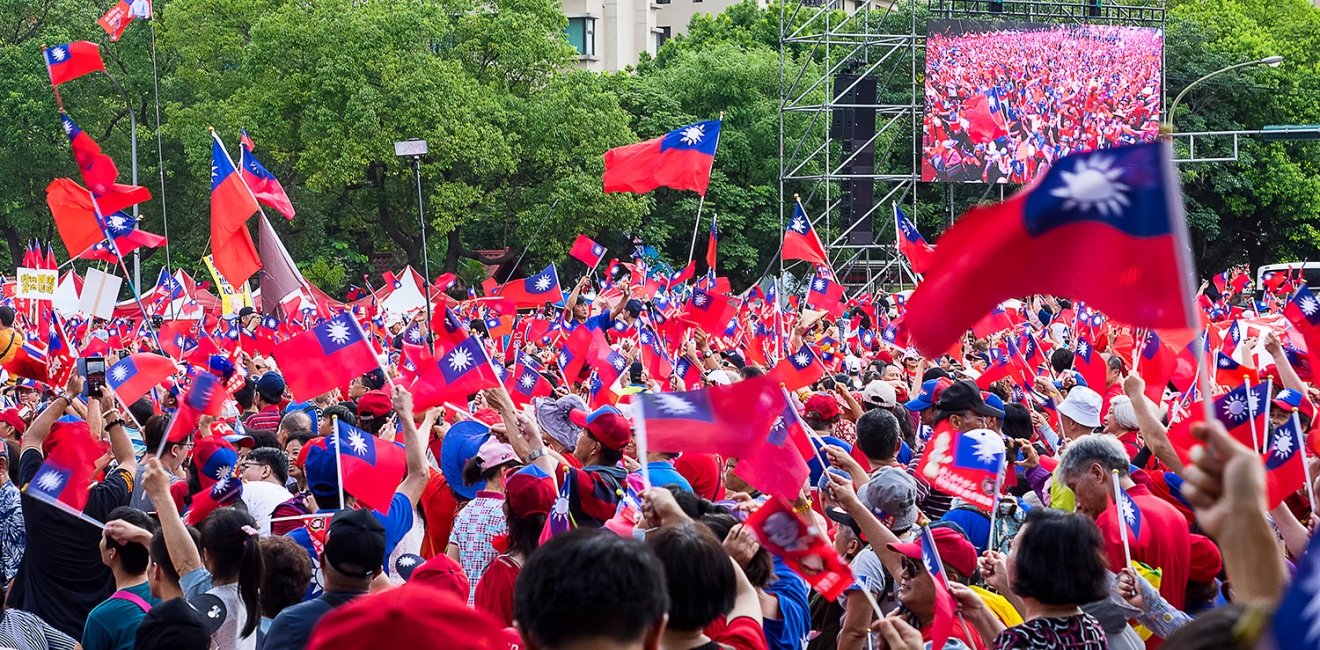
A blog of the Indo-Pacific Program
As Taiwan’s 2024 presidential election draws near, the ruling Democratic Progressive Party (DPP) is facing backlash from mishandling the COVID-19 vaccine rollout, rising housing costs, and a struggling economy. The result is that DPP support has been stagnating in the polls, with approval ratings below 50% for months. Yet the momentum is not in favor of Taiwan’s opposition. Recent polling indicates that the DPP leads the presidential race, with the opposition divided between the traditional Kuomintang (KMT) and the new Taiwan People’s Party (TPP). The TPP has proved itself a formidable, disruptive force, attracting significant support but has so far refused to ally with the KMT. How is the DPP able to maintain a lead despite its unpopular domestic policies, and why is the opposition so divided amidst this political opportunity?
The ultimate influence in this regard is cross-strait policy. Debates over Taipei’s relations with Beijing remains the key issue in Taiwanese presidential elections. Cross-strait challenges also represent critical weaknesses in both the KMT and the TPP that seemingly prevent either party from overtaking the DPP. As such, the DPP’s continued lead is less a referendum on the popularity of the party itself, but rather a reflection of the public’s support for policies that advocate strong Taiwanese sovereignty and greater confrontation and decoupling from the Chinese mainland.
The KMT’s Unshakeable China Connections
The KMT has been struggling to gain support, unable to overcome the TPP’s challenge to their position as the primary opposition party. The greatest obstacle is the party’s reputation as pro-China with ties to the mainland and the Chinese Communist Party (CCP). The KMT’s historical advocacy for more engagement with China, even when the policy was unpopular, coupled with frequent visits to the mainland by high-profile KMT officials, has created a strong link between the KMT and China in the public eye. Yet polls show that a majority of Taiwanese not only have concerns about the PRC but also link a KMT victory with Chinese interests, a major thorn in the KMT’s attempts to appeal to popular sentiments among a public growing warier of China.
Some KMT leaders have tried to tone down their PRC ties, but the party’s fragile coalition of status quo and hardline unification supporters have significantly hindered these endeavors. Conservative elements of the party—which focus more on the issues including identity that the PRC and ROC share—hold considerable sway in determining party leadership, forcing KMT politicians to cater to their demands or have their authority undermined. Additionally, hardline conservative organizations occupy roughly 25% of KMT party membership, forcing party leaders to cater to them and stifling attempts at reforming the cross-strait agenda. The KMT’s struggles in balancing these internal divisions present a fundamental obstacle in attempts at party reform, rendering its public support lackluster.
The TPP’s Political Ambiguity
The TPP has exploited KMT weaknesses to rise to prominence, but it too faces challenges in attracting steadfast supporters. Seeking voters from both sides of the aisle, the party has been deliberately vague on its cross-strait agenda. When the party has articulated positions, the stances it stands by often offer little insight into the policies a potential TPP administration would employ in navigating both Taiwan’s relationship to China and the United States.
At the same time, The TPP’s agenda has been dominated by founder and presidential candidate Ko Wen-je, with few other voices offering a comprehensive party position. Ko is effectively the sole d eterminer of the party’s policy stances, and other TPP politicians lack his profile or outspokenness. Ko himself has been inconsistent on critical cross-strait issues, such as a potential cross-strait trade agreement, rendering TPP policy vague.
Ironically, though, the deliberately ambiguous agenda has been part of TPP’s success in attracting a diverse range of voters. Nonetheless, the tactic also leaves the TPP vulnerable to changes in political winds. Without an ideological basis to stand on, the party lacks staunch partisans to bolster its ranks during times of political turmoil, and many TPP voters could easily swing to other parties based on political developments, as seen in the polls thus far.
China’s Response Remains a Wild Card
As another wrench in the system, Foxconn founder Terry Gou’s recent entrance into the race is also likely to impact both the TPP’s and the KMT’s support levels. His candidacy is expected to divide the opposition vote further and strengthen the DPP’s position.
However, while domestic policies remain important in shifting public opinion, it is above all cross-strait policy that can unite or divide Taiwanese voters. Taiwan’s elections remain paramount. A clear line in cross-strait relations has been key to continued DPP support amidst a time of economic downturn and public disillusionment, but it also drags down the opposition parties. The continued dominance of cross-strait issues in Taiwan’s politics carries major policy implications for the region beyond simple electoral outcomes.
The question beyond Taiwan’s borders, though, is how Beijing will respond to these circumstances. As all three parties look to have more measured engagement with the CCP in varying degrees, the PRC’s attempts to sway the Taiwanese political spectrum towards a pro-China angle that leads to “peaceful reunification” seem increasingly futile. With economic pressures already squeezing the party-state, a long-term inability to fulfill promises on Taiwan could prove catastrophic towards the Xi administration’s legitimacy. Beijing’s growing militarization and aggression in the Strait can be seen in this light. If Beijing feels constrained and unable to make progress in Taiwan it may feel the need to adopt further coercive measures to intimidate Taiwan’s populace or even ramp up preparations for military conflict.
However, if China’s intention is to scare the Taiwanese public into reversing course, its plans are only likely to backfire. Recent military escalations, such as following US House Speaker Nancy Pelosi’s visit, do not seem to have shifted the Taiwanese public towards engagement with China. The island’s support for unification remains low, while approval of Taiwanese sovereignty and identity continues to rise. Beijing’s domestic actions, from curbing democracy in Hong Kong to clamping down on private and foreign businesses, also hinder its credibility in preserving the “autonomies” outlined in it reunification plan. These actions will likely further current political trends in strengthening the DPP and hampering its domestic rivals.
The culmination of these tensions has yet to unfold, but amidst the speculation and analysis, cross-strait policy remains at the center of these issues Washington will have to maintain cross-strait deterrence and continue to support Taiwan against Chinese economic and military coercion. For Taiwan, another DPP term would mean a continued hardline stance from Beijing that Taipei will have to prepare for.
Nick Meeker was a summer 2023 intern with the Wilson Center's Asia Program.
Follow the Asia Program on Twitter @AsiaProgram. or join us on Facebook.
The views expressed are the author's alone, and do not represent the views of the U.S. Government or the Wilson Center. Copyright 2020, Asia Program. All rights reserved.
Author

Indo-Pacific Program
The Indo-Pacific Program promotes policy debate and intellectual discussions on US interests in the Asia-Pacific as well as political, economic, security, and social issues relating to the world’s most populous and economically dynamic region. Read more





